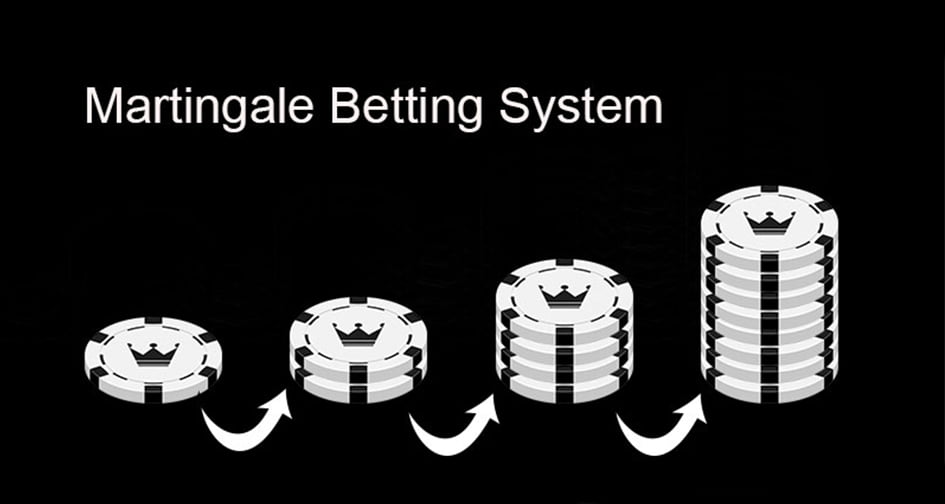Betting dates back to ancient Greece more than 2000 years ago. Even if it may have existed long before then, the earliest records are from Greece and it all started with sports betting. Rome adopted and legalized betting shortly after. Eventually, betting spread throughout the world and became one of the most common forms of entertainment. As betting became a thing across the globe, betting strategies evolved along with it. These gambling strategies are developed to help people make the best out of the experience. One of the oldest betting strategies out there is the Martingale strategy.

About the Martingale Betting Strategy
The Martingale Betting strategy is named after John Martingale, a casino owner who advocated for his customers to use this strategy in his casino claiming that it will help them beat the house edge. The initial documented use of this strategy was before the 18th century and it may have existed long before then with no records. The system gained popularity over the years because it is simple and straightforward. Unlike when you’re counting cards, you don’t need to mentally calculate the value of cards to increase your chances of winning. Keep in mind that there are several strategies in the Martingale system but they all have a similar theory.
Those who advocated for the theory insisted that losers should always double their wager after they lose. This way, when a player on a losing streak eventually wins, they will recover the money they had lost. For example, if the Martingale system is applied to a simple head and tales game, were heads are a win and tales is a loss, the player will double their wager each time the coin lands on tales. The idea is that the coin will eventually get to heads if the player keeps going. The theory is flawed because the player doesn’t have a never-ending supply of wealth and will eventually be bankrupt if they keep playing.

The Martingale strategy can be applied in any game but it is often used during simple games and games with high odds like the heads and tales game and roulette. In roulette, the probability of the player hitting red or black is almost 47.4%. There are 18 black lines, 18 red lines, and two green lines on a typical roulette wheel. With such a high probability, it’s easy to convince yourself that the Martingale system will work. The fundamental flaw of this Martingale system is that the risk is always higher than the reward, especially after going through a catastrophic losing streak.
Types of Martingale Strategy
John Martingale encouraged his customers to use this strategy because he was greedy. He told them stories of how others had won huge sums by following the strategy. Keep in mind that he never used the strategy himself. Even if the gamblers know that they don’t have infinite wealth, they still keep trying until they eventually lose everything. Besides, after doubling down several times in a roll they have difficulty stopping because they have already lost a lot of money and hope that they will eventually start winning so they can make all their money back.
The definition of the Martingale above is for the classic version of the system. We also have the mini, grand, and anti-Martingale, all of which are variations of the original classic Martingale defined above. How does the mini Martingale work? The logic of the mini Martingale is the same as that of the classic Martingale. The only difference is the pace at which players increase their wagers after losing. So, each time you lose, rather than doubling your next wager, all you have to do is increase it slowly. So, if you’re on a losing streak, you’ll be losing slowly until you eventually win. This means that your bankroll will be shrinking slowly and might just last long enough for you to win.
When it comes to the grand Martingale system, you will need to take things up a notch from the classic Martingale. As stated above, the risk attached to the classic Martingale betting system is not worth the possible reward. To overcome this flaw, the Grand Martingale system was created to be more aggressive. Each time you lose, you’re not just going to double your wager, you’re going to have to add extra money. For example. If the original bet you lost was $20, the next bet would be $50 instead of $40 as it would have been if you were following the original strategy. This means you’re increasing the risk even more but the reward will be higher if you eventually win. The Grand Martingale burns through your bankroll even faster than the classic Martingale. It’s not recommended for anyone who is working with a tight budget.
The third strategy is the Anti-Martingale system. As the name implies, this is the opposite of the classic Martingale system. The player doubles down after each win and reduces the wager after each loss. It is also called Reverse Martingale. The reverse Martingale system is great when you’re on a winning streak because you will generate a significant amount from your consecutive wins. The drawback of this strategy is that the risk is even higher because you might end up losing, not just your wager amount but your profit as well. Every winning streak eventually comes to an end so make sure that you gamble responsibly and stop before it’s too late.
Advantages and Disadvantages of the Martingale Systems
The classic Martingale strategy and all its variations have the same thing in common. Winning big, short-term is going to be great for the gambler as long as they do not stay stuck in a losing streak until they run out of cash. It’s easy so anyone can implement it without learning any special skill. However, the strategy is fundamentally flawed because there is no way to predict when a gambler will win or lose in most games. It is based on the fallacy that there will always be a winning streak to balance out a winning streak and that a person cannot keep being unlucky or lucky forever. This doesn’t work because each game stands alone. In the heads and tales game, for example, the result of the first round doesn’t influence the result of subsequent rounds in any way. So, the player can keep hitting tales indefinitely. There is no way to predict when the player will hit heads.
Another disadvantage is that winning after e during a catastrophic losing streak isn’t going to get you all the money you’ve lost. Apart from this, most casinos have maximum bets and limits for losing or winning. So, if the casino stops you from playing after several losses, you will not have the chance to get back any of the money you’ve spent. The risk attached to this system is just too great compared to the reward. The only chance you might have to compensate for your losses is when the winning streak that follows the winning streak lasts for longer. For example, you’ll make a profit if 3 losses are followed by 6 wins.
The Verdict
The bottom line is that the Martingale betting system is a flawed gambling strategy that promises to give you an edge over the house edge but fails to take unpredictability into account. It also fails to consider the fact that no gambler has an infinite supply of wealth. Even if they have one, they definitely wouldn’t want to spend it on one game in the casino. When you’re fortunate enough to enter a winning streak after a losing streak, there is a strong chance that the casino will stop you from playing before you have the chance to win back everything you’ve lost. If you want to use this strategy, we recommend starting with the Mini Martingale system to slow down the pace of your losses. When you hand mastered the system, you can test the classic Martingale strategy and eventually try the Grand Martingale Strategy. Just make sure that you’re in control of the game and not the other way around.




